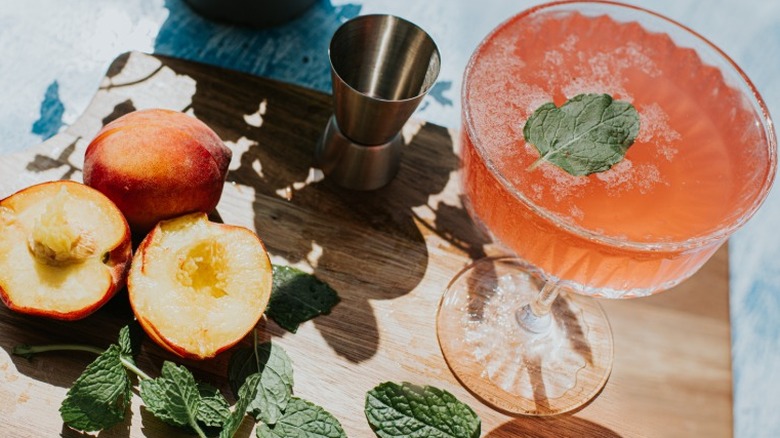Cocktail Garnishes May Be On The Chopping Block As Some Bartenders Turn To Minimalism
To me, a cocktail garnish is like the bow on a gift; it ties together a drink's flavors, textures, and aesthetic. Unfortunately, cocktail garnishes are in danger of extinction due to rising concerns about food waste and the ever-increasing impacts of climate change. A 2023 study published in Nature Food found that global food loss and waste are responsible for 50% of the greenhouse gas emissions stemming from global food systems. Another factoid going around claims that one kilogram of lemon garnishes (roughly two pounds) creates as many carbon emissions as a 20-minute car ride. With this data, it's understandable that some bartenders are banishing the beloved garnish.
Others believe that garnishes are worth keeping, despite the so-called waste. "The whole conversation is a bit silly and self-congratulatory because restaurants are never going to be that eco-friendly," says Konrad Kantor of Manolito, a Cuban restaurant in New Orleans' French Quarter. Garnishes like lemon wedges, edible flowers, and espresso beans (the hallmark of an indulgent espresso martini) still have an important place in the cocktail glass. That is, according to bartender and cookbook author Natasha David. In an article for Epicurious, David wrote, "I'm here to argue that they are a vital part of any cocktail's drinking experience. I like to think of each garnish as an ingredient — a key player in how that particular cocktail will be enjoyed."
What is a sustainable cocktail?
As its name suggests, a sustainable cocktail is made using ingredients which have a low impact on the environment. This approach requires strategic planning, creativity, and collaboration between bar staff and management. For example, Steve Minor, Corporate Director of Beverage at 1 Hotels, shared that his team uses a whole lime — pulp, juice, wedges, and zest — to create zero-waste margaritas (Jennifer Aniston's favorite cocktail) using fresh lime juice and natural sweeteners. (In this sense, zero-waste seems to imply putting the same ingredients to more uses, though what difference this makes on the environment remains unclear since a single lime has the same impact regardless of whether it's zested or not.)
The other important aspect of sustainable cocktails is sourcing ingredients in an eco-friendly way. Often, this is achieved by using local, seasonal fruits and vegetables (and spirits, if possible, and ordering products in bulk to avoid unnecessary deliveries to minimize carbon footprint.
To make a sustainable cocktail at home, open your fridge for inspiration. Fresh fruit on its last leg would be great in a frozen margarita or infused into simple syrups. Muddle a sprig of rosemary, basil leaves, or mint to add herbaceous notes to a mojito and serve your cocktail in a glass with your favorite garnish (or not).

